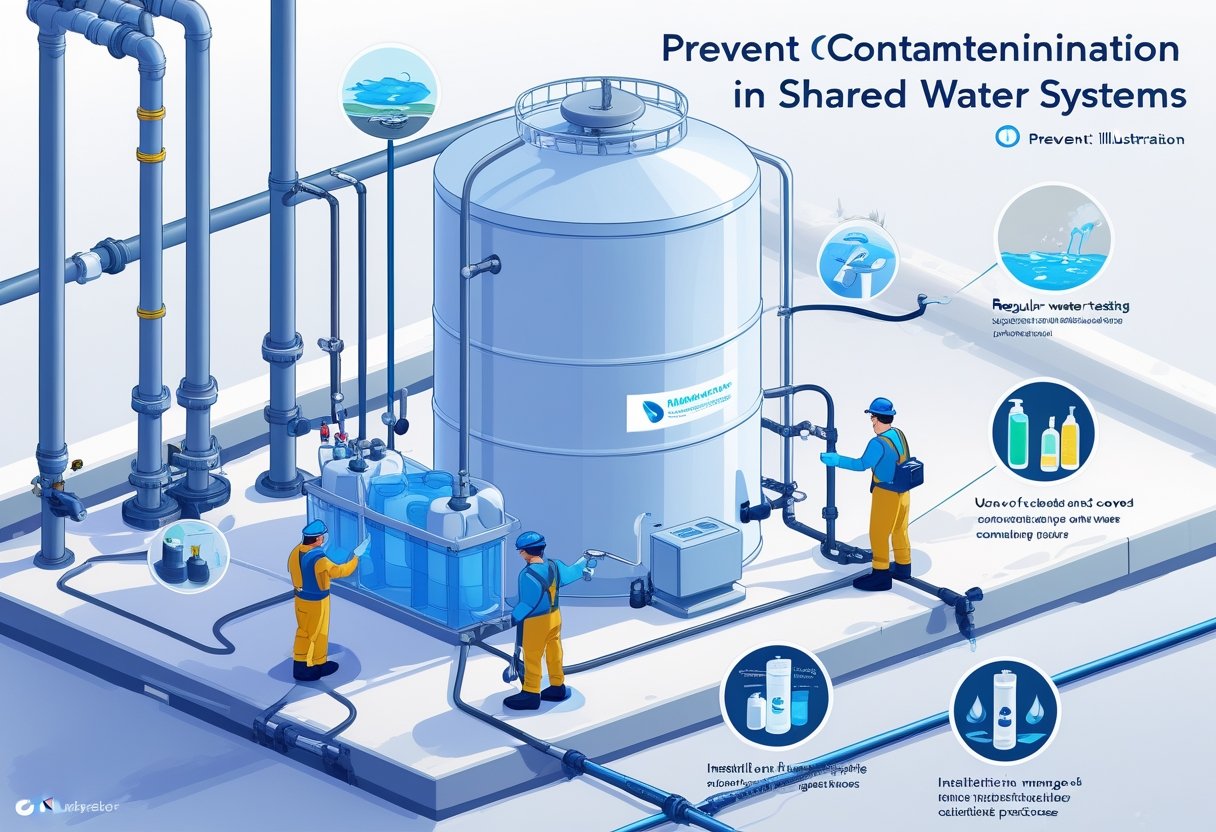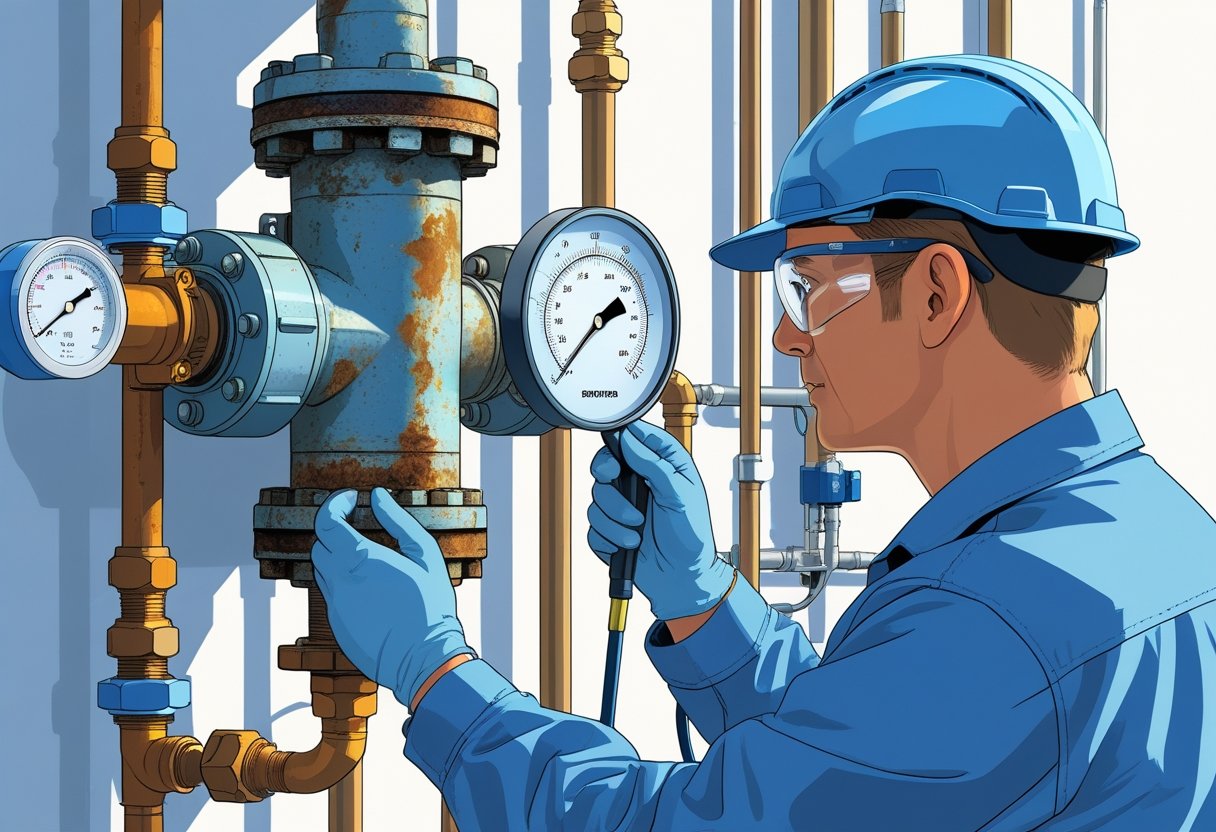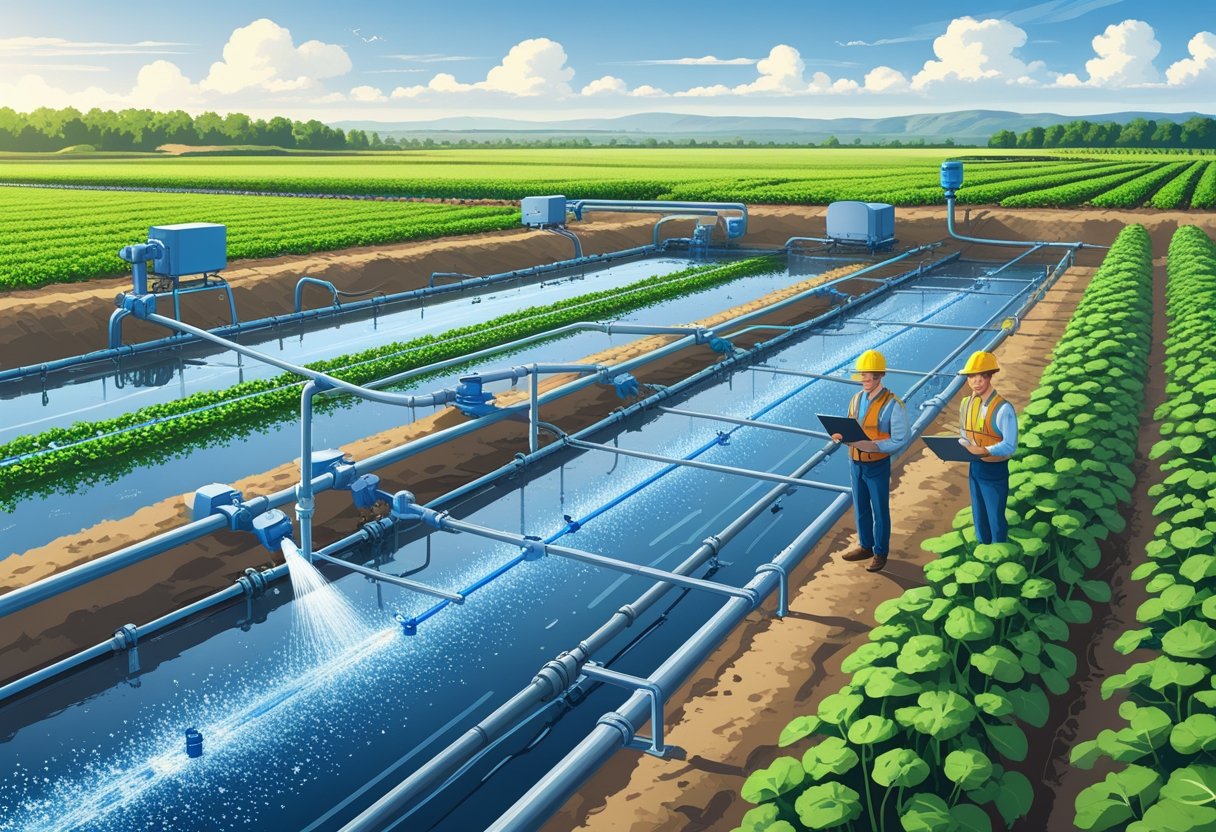As a homeowner, understanding backflow testing requirements is crucial to safeguarding your water supply. Annual backflow testing is not just a legal obligation; it’s essential for ensuring the safety and quality of the water you and your family consume. Failing to comply with local regulations can lead to serious health risks and costly penalties.
Pacific Backflow serves all of San Diego County, providing reliable and responsive backflow testing. With nearly five decades of experience, we ensure that your equipment complies with regulations and functions correctly. Our certified technicians make the process seamless, filing reports with the water authority on your behalf so that you can focus on what matters most.
Navigating the intricacies of backflow requirements can seem daunting, but you are not alone. Partnering with a trusted service like Pacific Backflow helps secure your home’s water system and protects your community's water supply. Understanding these requirements will give you peace of mind and promote safe drinking water.
Understanding Backflow and Its Risks
Backflow presents significant risks to your home's water supply. Knowing what backflow is, how it can occur in your plumbing systems, and the common causes of backflow incidents is crucial for maintaining a safe environment.
What Is Backflow?
Backflow is the unintended reverse flow of water within a plumbing system that can allow contaminants to enter your clean water supply. This situation can pose serious health risks if harmful substances, such as chemicals or bacteria, mix with potable water. Properly installed and maintained backflow prevention devices are essential in safeguarding your household from such incidents. Understanding the nuances of backflow helps you identify the need for regular testing and maintenance in your home's plumbing.
How Backflow Occurs in Residential Plumbing
Backflow typically occurs due to changes in water pressure within the plumbing system. When a drop in pressure occurs—possibly due to a burst pipe or high demand during peak usage—water can flow backward through the pipes, potentially carrying contaminants. Additionally, back-siphonage, a type of backflow, can happen when a negative pressure gradient is created, drawing water back from unwanted sources. Awareness of these plumbing dynamics is vital for homeowners to take proactive measures to prevent backflow incidents.
Common Causes of Backflow Incidents
Several factors can contribute to backflow occurrences in residential settings:
- Improperly Installed Devices: If backflow preventers are not installed according to local codes, they may fail to operate correctly.
- Cross-Connections: Connections between potable water lines and non-potable sources can create paths for contaminants to enter the clean water.
- Water Pressure Fluctuations: Sudden drops in water pressure can lead to backflow situations, particularly during emergencies or maintenance work.
- Aging Infrastructure: Older plumbing systems may have wear and tear that exacerbates the likelihood of backflow.
To minimize these risks, regular inspections and maintenance of your backflow prevention devices are essential. At Pacific Backflow, we offer comprehensive testing and timely repairs to ensure your systems remain compliant and secure. Protecting your home's water supply is our priority.
Why Backflow Testing Is Required for Homeowners
Maintaining the integrity of your water supply is essential. Backflow testing plays a crucial role in ensuring water quality and public health while fulfilling legal obligations. Understanding these requirements can help you make informed decisions regarding your home's water safety.
Protecting Water Quality and Public Health
Backflow testing is essential for safeguarding the quality of your drinking water. This process detects any unwanted reversal of water flow that can introduce contaminants into your system. Pollutants from irrigation systems, industrial processes, or even residential plumbing can lead to serious health risks if they enter your water supply.
By ensuring that backflow preventers function correctly, you help maintain clean and safe water. Regular testing, which Pacific Backflow provides, guarantees that these systems operate effectively. Such diligence protects not only your household but also the community's overall public health.
Legal and Regulatory Obligations
Many municipalities impose strict regulations regarding backflow testing. Compliance with these laws is not just a recommendation; it is often a legal requirement for homeowners with specific plumbing features. For instance, properties with irrigation systems or pools typically need annual backflow testing to ensure local water safety standards are met.
Neglecting these obligations can result in fines or increased scrutiny from local water authorities. Pacific Backflow simplifies this process by submitting all required reports on your behalf, ensuring you remain compliant with local regulations without the added stress.
Potential Consequences of Non-Compliance
Failing to conduct regular backflow testing can have significant consequences. Besides legal penalties, non-compliance can lead to severe health hazards. Contaminated water can cause gastrointestinal diseases and other serious health problems for you and your family.
Additionally, if your backflow preventer malfunctions, you risk substantial damage to your property and the surrounding environment. Regular testing and maintenance, including services offered by Pacific Backflow, help mitigate these risks, ensuring your home’s water supply remains safe and compliant. Ignoring these responsibilities can lead to costly repairs and chronic health issues, making it imperative to prioritize backflow testing.
Key Backflow Testing Requirements for Residential Properties
Understanding the key requirements for backflow testing is essential for homeowners. These regulations ensure safe water supply and compliance with local laws.
Mandatory Testing Frequency
Residential properties typically require backflow testing annually. This frequency ensures that your backflow prevention device is functioning correctly to prevent contaminants from entering your water supply. Local regulations often dictate this testing requirement. Failing to comply can lead to fines or legal issues.
For homeowners, scheduling a timely inspection with a certified testing service is crucial. Pacific Backflow can assist you in maintaining compliance while ensuring your system is protected. Regular maintenance not only preserves the safety of your drinking water but also helps prolong the lifespan of your backflow device.
Who Can Perform Backflow Testing?
Only certified professionals should perform backflow testing. These technicians have the necessary training and expertise to assess your system effectively. They are knowledgeable about local codes and regulations, ensuring that your property remains compliant.
Choosing a reputable provider, like Pacific Backflow, guarantees quality and reliability. Make sure to verify the credentials of any technician you hire. Proper testing involves a thorough examination of the backflow preventer and recording of results, which should be documented for your records.
Documentation and Record-Keeping
Maintaining accurate records of your backflow testing is essential. You should keep test reports and performance documentation on file, as local water authorities often require these for compliance. Having this information readily available can simplify future inspections or audits.
It's advisable to retain records for at least five years, but check with local regulations for any specific requirements. Pacific Backflow not only conducts your tests but also files necessary paperwork with the city water authority on your behalf. This streamlined process allows you to focus on other responsibilities while ensuring all compliance needs are met efficiently.
Backflow Prevention Devices in Homes
Backflow prevention devices are essential for maintaining safe water systems in residential properties. Understanding the types of devices, how they operate, and their proper installation will help you protect your home's plumbing system and water supply.
Types of Backflow Prevention Devices
Several types of backflow prevention devices are available for residential use. The most common include:
- Air Gap: A physical separation between the water supply and potential contamination points. Effective but may not be practical for all installations.
- Pressure Vacuum Breaker (PVB): Commonly used in irrigation systems, it prevents backflow using a specialized valve that opens to release pressure.
- Double Check Valve Assembly (DCVA): Consists of two check valves and is ideal for medium-risk applications, such as in irrigation lines.
- Reduced Pressure Zone Device (RPZD): Offers the highest level of protection and is typically installed in high-risk applications.
Selecting the right device is crucial to safeguarding your drinking water against contaminants.
Backflow Preventer Valves: How They Work
Backflow preventer valves are engineered to stop contaminated water from reversing into the clean water supply. They operate based on the principle of pressure differentials.
When the pressure in the potable water system is higher than that in the contaminated water source, the valve remains closed. If a drop in pressure occurs, the valve opens to allow flow, preventing backflow.
Regular testing helps ensure these valves are functioning correctly. It's important to have your devices checked annually. For reliable, responsive backflow testing, consider professional services like those offered by Pacific Backflow.
Device Selection and Proper Installation
Choosing the right backflow prevention device depends on your home's water system and local regulations. Here are key points to consider:
- Assess Your Water System: Evaluate the potential contamination risks in your area. Higher risks may necessitate more advanced devices.
- Follow Local Codes: Ensure that the chosen device complies with local plumbing codes and requirements.
- Professional Installation: Proper installation is critical for the effective operation of the device. Hiring a certified technician helps guarantee adherence to regulations.
Pacific Backflow can assist with professional installation, ensuring your system meets safety and regulatory standards. Regular assessments and timely repairs, if needed, can further protect your home's plumbing system.
Testing Process and Maintenance for Homeowners
Understanding the testing process and maintenance for backflow prevention devices is essential for ensuring a safe water supply. Proper procedures and regular upkeep can prevent costly repairs and maintain compliance with local regulations.
Pre-Testing Preparations
Before testing your backflow prevention device, ensure that the area around the device is easily accessible. Clear any debris or landscaping that may obstruct the technician. Gather previous testing records, as these can provide valuable insights into the device's history. You should also ensure that the water supply is turned off at the point of testing to facilitate proper checks. Having accurate information will help your technician perform the test more efficiently.
If you are using a professional service, such as Pacific Backflow, communicate any concerns you may have about the device functionalities prior to the test. This prepares everyone involved and ensures a thorough assessment.
Visual Inspection and Pressure Checks
During the testing process, a certified technician will conduct a visual inspection of your backflow prevention device. They will check for any physical damage, leaks, or signs of wear and tear. This is crucial for identifying potential issues that could compromise your plumbing system.
Next, pressure checks will be conducted to assess the functionality of the device. This includes ensuring that the device can maintain the necessary pressure levels to prevent backflow. If abnormalities are found during these checks, the technician will inform you of the required repairs.
Repair and Maintenance Responsibilities
Once the testing is complete, if repairs are needed, it is your responsibility to initiate these promptly. Failure to address identified issues can lead to compromised water safety. Pacific Backflow can assist with repairs, ensuring that all work meets local water district codes.
Routine maintenance is crucial for keeping your backflow prevention device in optimal condition. Plan for annual testing, as many municipalities require this. Regular inspections will help catch issues before they escalate, protecting both your plumbing system and the public water supply. Keep documentation of testing and repairs to ensure compliance with regulations.
Special Considerations for Irrigation and Alternative Water Sources
When managing backflow prevention for irrigation systems and alternative water sources, there are specific risks and compliance guidelines to consider. Understanding these factors is crucial for ensuring safe water supply and adhering to regulations.
Risks Associated with Irrigation Systems
Irrigation systems can pose significant risks if not properly managed. Contaminated water can flow back into your potable water supply due to cross-connections, leading to potential health hazards. Common contaminants include pesticides, fertilizers, and animal waste.
To mitigate these risks, it’s essential to install appropriate backflow prevention devices. Regular testing is required to ensure these devices function correctly, preventing any reverse flow that can compromise water quality. Maintaining these systems not only protects your health but also complies with local regulations, safeguarding the community's water supply.
Compliance Guidelines for Outdoor Installations
Compliance with backflow prevention guidelines is crucial for outdoor installations involving irrigation and alternative water sources. Local regulations often mandate that backflow prevention devices must be installed at specific locations, such as connections with non-potable water sources.
You should schedule regular inspections and testing of backflow devices to ensure they meet compliance standards. In San Diego County, consider consulting with professionals like Pacific Backflow for reliable, responsive backflow testing and installation services. They have decades of experience in protecting community water supplies and can help you navigate compliance effectively. Following these guidelines not only protects your home but contributes to community health.
Frequently Asked Questions
This section addresses common queries regarding backflow testing requirements for homeowners. Understanding these aspects will help you maintain compliance and ensure the safety of your water supply.
How often is backflow testing required for residential properties?
Backflow testing is typically required annually for residential properties. These regulations help ensure that backflow prevention devices are functioning correctly to protect the potable water supply. Some municipalities may have additional requirements, so it’s essential to check local regulations.
What are the specific regulations for backflow testing in Texas?
In Texas, backflow prevention assemblies must be tested annually by a certified tester. You may also need to submit test reports to your local water authority to demonstrate compliance. It is advisable to stay informed about county-specific requirements, as they can vary.
Are there particular backflow prevention device testing regulations in California for homeowners?
California regulations mandate that backflow prevention devices be tested at least once a year. Homeowners must also keep accurate records of testing and maintenance. Local water authorities often provide guidelines on the types of devices that need testing.
Why is backflow testing considered essential for home safety?
Backflow testing is crucial as it prevents contaminated water from entering your home’s clean water supply. A malfunctioning backflow prevention device can lead to serious health risks. Regular testing ensures that your water remains safe for consumption.
Which states mandate the installation and testing of backflow preventers?
Many states, including California, Texas, and Florida, require the installation and annual testing of backflow preventers for residential properties. Each state's regulations may differ, so you should verify the specific requirements applicable to your location.
At what intervals should backflow prevention devices be tested?
Backflow prevention devices should be tested at least once a year to ensure they are functioning correctly. Some systems may require more frequent testing, especially in areas with high contamination risks. Regular monitoring contributes to effective water safety management.
For reliable backflow testing services, consider Pacific Backflow. Serving all of San Diego County, we are dedicated to protecting your water supply with expert care.











